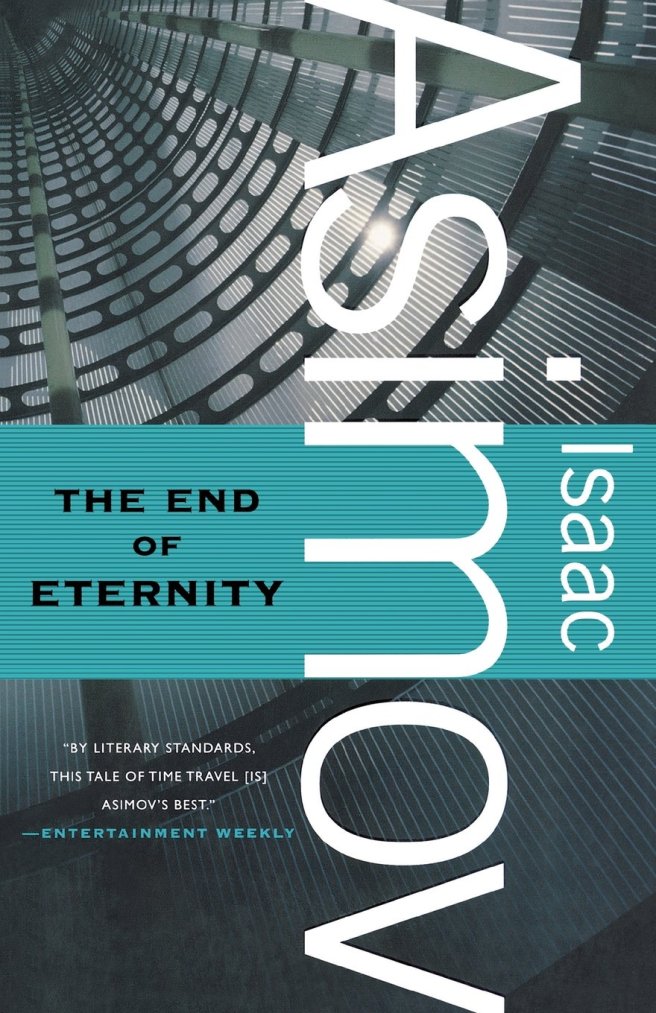
Warning, this review contains plot spoilers, it is meant to be read after having finished the book
I read this book not only because Isaac Asimov is a renowned writer, but also because someone told me it is very similar thematically to my own novel, The Realm of Possibility. It does have the same basic idea at its heart. In Asimov’s novel, there are a group of people with various roles in a realm known as Eternity. The people are referred to as Eternals, and the have different titles. The main character, Andrew Harlan, is a technician. A technician is someone who makes Reality Changes. This means that, from the perspective of eternity, which is outside of time, a technician can intervene in history and adjust circumstances in the name of the prosperity and wellbeing of humanity. So, let’s say that in history the human race finally gets involved in nuclear war and most of civilization is destroyed. A technician like Harlan would intervene so that such a catastrophe would never happen. There are Computers in Eternity as well, who have an encyclopedic knowledge of events and their possible ramifications. In order to intervene properly in reality, there has to be knowledge of how the ramifications will play out. For instance, it wouldn’t be good if someone prevented a nuclear war with a reality change only to set things up for a more serious catastrophe later.
The source of the drama in this book begins when Harlan falls in love with a woman named Noys Lambent. There are strict rules governing Eternal’s interaction with people living in time. When Harlan learns that there is an imminent Reality Change planned and Noys will be involved, he rebels, knowing that after the Reality Change Noys will not be present anymore or will be different from the women with whom he fell in love. In an act of desperation, Harlan undoes the circumstance that is essential to creation of Eternity in the first place: he prevents an individual named Cooper from being sent back to an earlier century. Cooper is important because he is sent from Eternity to be the inventor of Eternity. At one point, humanity was not able to enter Eternity to adjust reality. If Harlan blocks Cooper from going back to the specific earlier time, eternity will never be invented. Harlan will get to keep Noys, but there will no eternity by which humanity can rectify it’s problems.
The plot thickens, though, as a series of startling revelations unfold. Noys is not merely a normal woman from time, but a woman from centuries far in the future. These are centuries that are hidden even from Eternals. The people in the Hidden Centuries have evolved even beyond the Eternals. The formation of Eternity has stalled evolution because there is no more danger or stress that would weed out weaker members of the species. Twissel, a Computer who first broaches the idea of the Hidden Centuries to Harlan, theorizes that people in the Hidden Centuries barred Eternals from travelling “upwhen” to their time because they would prefer to keep separate from beings that are less evolved than they are. Harlan ends up guessing correctly that Noys is from the Hidden Centuries. At the end of the book, Noys reveals that, as a member of the Hidden Centuries, she is against the formation of Eternity because it prevents humanity from developing resources for interstellar travel. Noys says, “Any system like Eternity, which allows men to choose their own future, will end by choosing safety and mediocrity, and in such a Reality the stars are out of reach.”
I just read this book a wrote a review myself, If you are interested, https://milesofpagesblog.wordpress.com/2017/08/14/end-of-eternity-issac-asimov/
I am glad I did, because well you didn’t mention the fact your posts is full of spoilers. Make sure you warn us! : ) Otherwise a very lovely re-cap of the story! Thanks for sharing!
LikeLike
Thanks for the advice, A.J. It’s probably a good idea to provide spoilers. I will follow your blog.
LikeLiked by 1 person
No problem! It’s nice to just leave a little spoiler alert warning! Well thanks I hope you enjoy it!
LikeLike